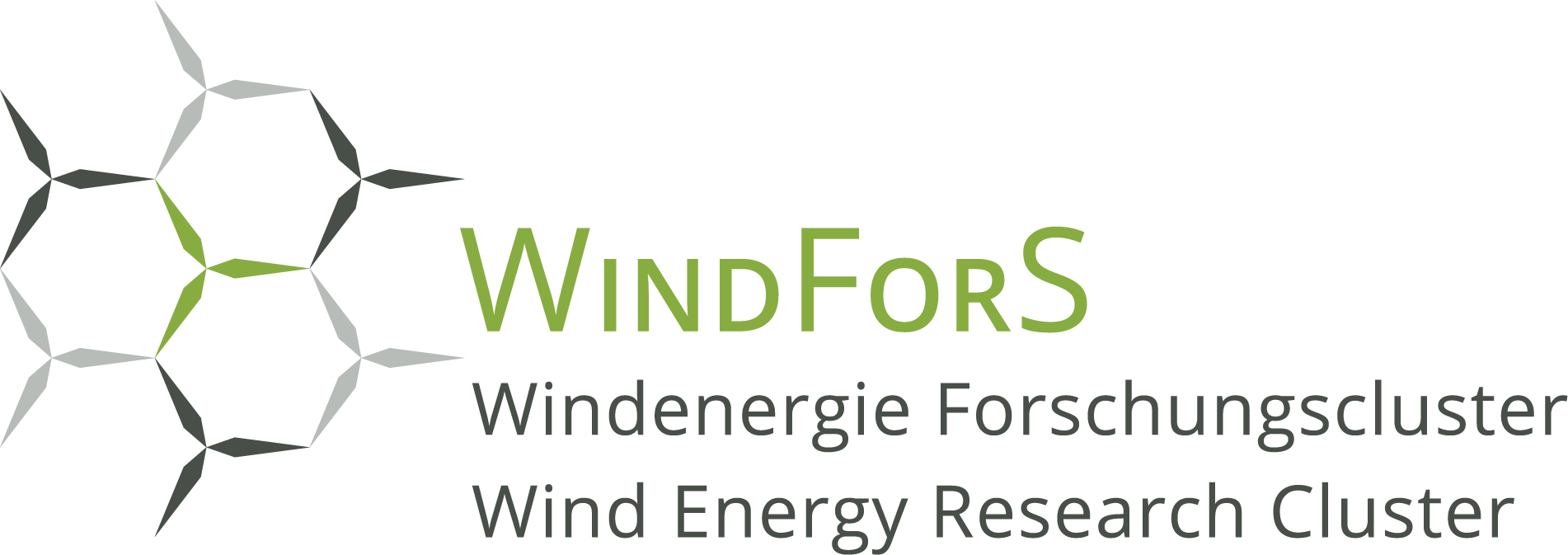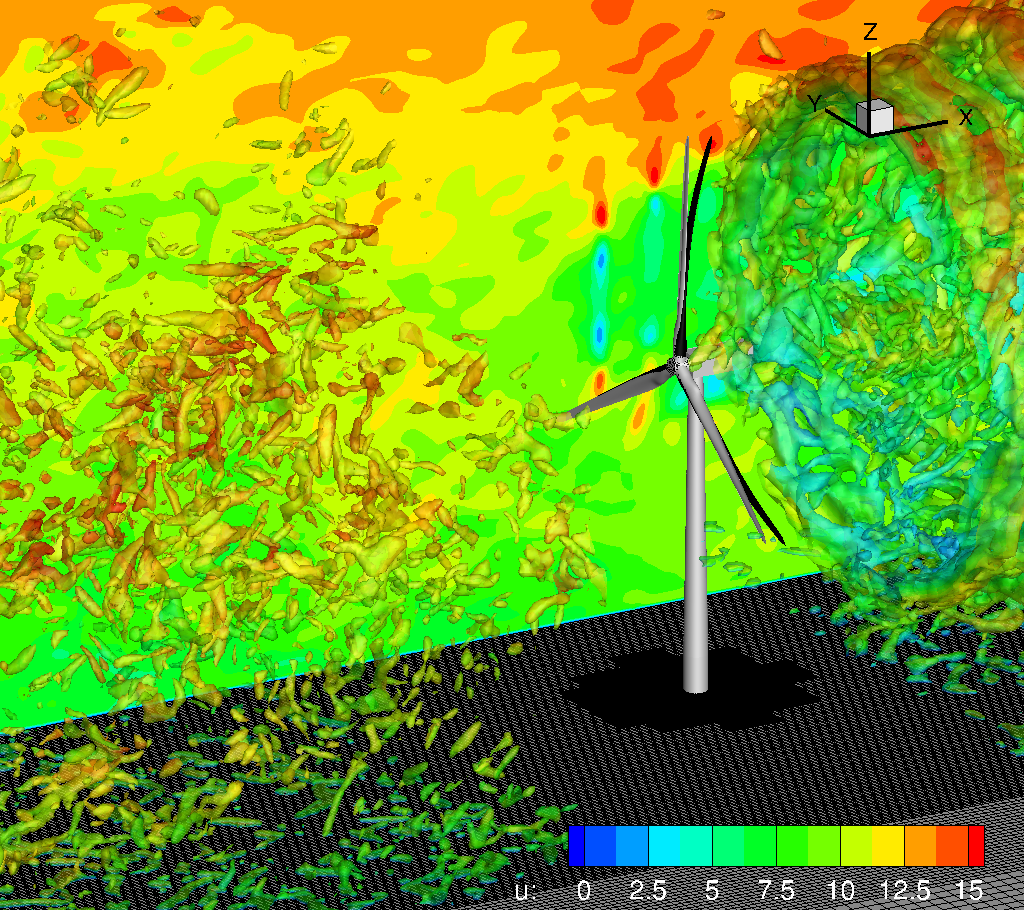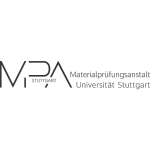Wind Turbine Dynamics
Load Simulation
WindForS members use many different software tools to simulate loads on onshore and offshore wind turbines. The spectrum goes from reduced models for longer simulated times to detailed models of drive trains, of support structures or rotor blades with computational fluid dynamics (CFD) for the aerodynamics.
Simulation software in use includes Flex5, Bladed, FAST, Finite element tools such as ANSYS, ABAQUS, and Poseidon; the multibody simulation (MBS) tool SIMPACK, and CFD codes including FLOWer.
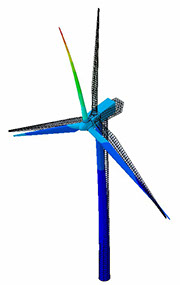
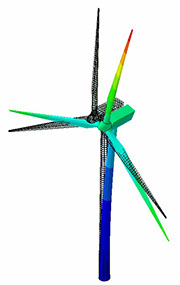
Depending on the purpose, models at different complexities can be coupled to create an appropriate model chain. Simulations using model reduction techniques and partially coupled finite element models produce accurate models for preliminary design with a very short processing time. The models are able to accurately represent the critical components from the foundation to the rotor blades. The models can have turbulent wind inputs along with wave loading for offshore models.
Multibody simulations
Stuttgart Wind Energy (SWE) uses Bladed from DNV-GL/Garrad Hassan and SIMPACK to carry out multibody simulations (MBS). These tools allow high level simulations of wind turbine models. Almost any flexible body can be modeled, such as geartooth contacts, bearing stiffness in the drive train or pitch system, and mooring systems for floating wind turbines.
SWE has cooperated for many years with these companies and takes part in the development of the SIMPACK wind turbine design modules.
Fluid-structure coupling with CFD: FLOWer-SIMPACK
Along with the basic aerodynamic theories, such as the Blade Element Momentum (BEM) theory or the Free Vortex theory, the flow solver FLOWer is coupled with the MBS program SIMPACK for very detailed simulations of aeroelastic issues. The involved institutes possess a powerful software package for “Aeroelastic Multibody Simulation” with which the structural dynamics can be modeled with a very high level of detail thanks to the MBS. The aerodynamics can be solved without the BEM theory but by using the URANS method, implemented in FLOWer code.
The MBS models coupled with this tool permit an analysis of the structural loads, aerodynamics (e.g. the pressure distribution on the blade surface) and the overall flow field.
System Identification, condition analysis, AND model updating
The materials Testing Institute (MPA) of the University of Stuttgart works on system identification, state analysis, and model updating:
- System Identification:
- Identification of the state of mechanical structures in plant and mechanical engineering using classical modal analysis and operational modal analysis (OMA)
- Measurement of the system response with seismic sensors (cyclic speed readers) and piezoelectric acceleration sensors
- Determination of deformation using strain gauge and optical measuring techniques
- Stress analysis with LMS Test. Lab Structures
- State Analysis: Calculation of the eigenfrequencies and eigenforms of mechanical structures in plant and mechanical engineering using the finite element program Abaqus FEA.
- Model Updating: adaption of unknown model system parameters – for example, boundary and transition conditions and restraint intensity – to the results of experimental model analysis using the finite element program FEMtools from Dynamic Design Solutions. With this, stiffness values from i.e. non-reachable locations such as offshore plants can be determined.
Vibration damping
Qualification of tuned massed dampers in cooperation with the manufacturer is important in order to decrease the amount of undesired highly structure-dynamical stresses on mechanical systems such as tower vibrations.
